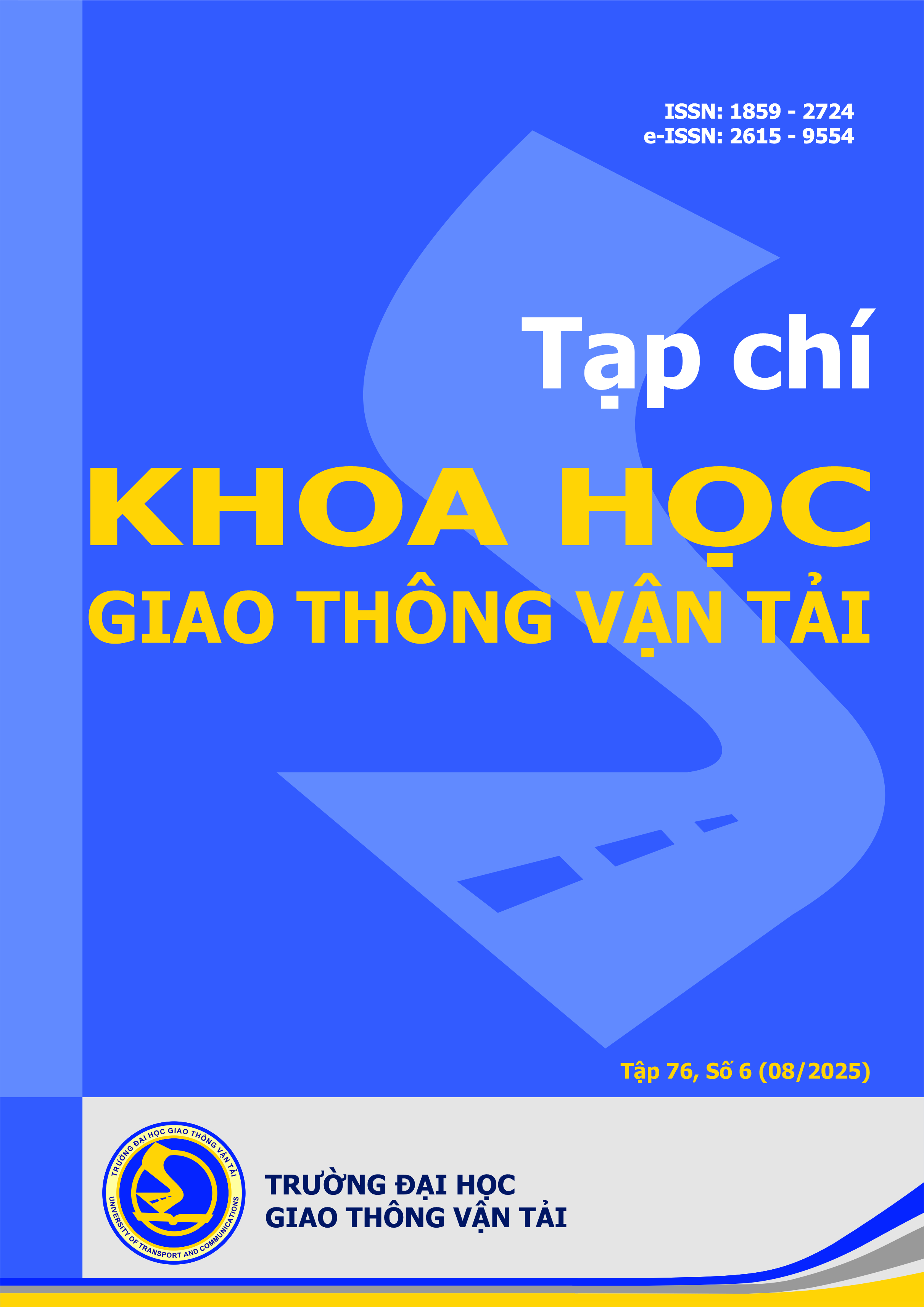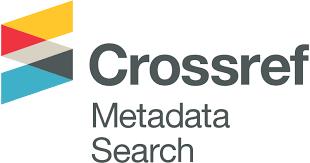Tăng cường phân loại và xử lý ảnh GPR bằng phương pháp học sâu kết hợp với gia tăng nhiễu trắng
Email:
hung.tq@vlu.edu.vn
Từ khóa:
Phân loại, nhiễu trắng, DNN, GPR, NDT
Tóm tắt
Công nghệ Ground Penetrating Radar (GPR) hiện đang được ứng dụng trong khảo sát công trình ngầm tại Việt Nam nhằm giảm rủi ro thi công, tiết kiệm chi phí và bảo vệ môi trường, đặc biệt trong lĩnh vực hạ tầng đô thị, giao thông, thủy lợi và khảo cổ. Tuy nhiên, để phát huy tối đa hiệu quả, cần cải thiện khả năng xử lý và phân tích dữ liệu GPR nhằm tăng độ chính xác trong khảo sát và đánh giá hiện trạng địa chất. Bài báo nghiên cứu việc cải thiện hiệu suất phân loại ảnh radar xuyên mặt đất (GPR) bằng cách kết hợp phương pháp học sâu (DNN) với tăng cường dữ liệu sử dụng nhiễu trắng. Dữ liệu nghiên cứu được thu thập từ các công trường xây dựng tại Hàn Quốc và bao gồm ba nhóm chính: nhiễu nền, phản xạ hyperbol từ vật thể chôn vùi, và phản xạ từ hố ga. Để tăng tính đa dạng của dữ liệu và giảm thiểu tác động của nhiễu môi trường, phương pháp tăng cường dữ liệu bằng cách thêm nhiễu trắng với hệ số biến thiên (cov) được áp dụng. Mô hình DNN dựa trên cấu trúc VGG19 được triển khai để trích xuất đặc trưng và phân loại các ảnh GPR. Kết quả thực nghiệm cho thấy dữ liệu tăng cường giúp cải thiện đáng kể hiệu suất phân loại, giảm hiện tượng overfitting và tăng cường tính tổng quát của mô hình. Nghiên cứu này chứng minh tiềm năng của việc áp dụng nhiễu trắng trong xử lý ảnh GPR kết hợp với phương pháp học sâuTài liệu tham khảo
[1]. A. P. Jaganathan, E. Allouche, N. Simicevic, Numerical modeling and experimental evaluation of a time domain UWB technique for soil void detection, Tunn. Undergr. Space Technol, 25 (2010) 652-659. https://doi.org/10.1016/j.tust.2009.08.006
[2]. D. Feng, X. Wang, B. Zhang, Specific evaluation of tunnel lining multi-defects by all-refined GPR simulation method using hybrid algorithm of FETD and FDTD, Constr. Build. Mater, 185 (2018) 220–229. https://doi.org/10.1016/j.conbuildmat.2018.07.039
[3]. W.-T. Hong, S. Kang, S. J. Lee, J.-S. Lee, Analyses of GPR signals for characterization of ground conditions in urban areas, J. Appl. Geophys, 152 (2018) 65–76. https://doi.org/10.1016/j.jappgeo.2018.03.005
[4]. S. Jones, H. Hunt, Voids at the tunnel–soil interface for calculation of ground vibration from underground railways, J. Sound. Vib, 330 (2011) 245-270. https://doi.org/10.1016/j.jsv.2010.08.015
[5]. R. D. Woods, Dynamic effects of pile installations on adjacent structures, National Academy Press, Washington, D.C., 1997.
[6]. K. H. Ko, G. Jang, K. Park, K. Kim, GPR-Based landmine detection and identification using multiple features, Int. J. Antennas Propagm, 2012. https://doi.org/10.1155/2012/826404
[7]. T. Saarenketo, Minnesota GPR 1998 Project, Report: TH28, Burtrum, District 3, (1998), Minnesota Department of Transportation, Office of Minnesota Road Research.
[8]. F. Gutierrez, J. P. Galve, P. Lucha, C. Castaneda, J. Bonachea, J. Guerrero, Integrating geomorphological mapping, trenching, InSAR and GPR for the identification and characterization of sinkholes: A review and application in the mantled evaporite karst of the Ebro Valley (NE Spain), Geomorphology, 134 (2011) 144-156. https://doi.org/10.1016/j.geomorph.2011.01.018
[9]. Trần Viết Tuấn, Ứng dụng Radar xuyên đất (GPR) để dò tìm và đo vẽ bản đồ công trình ngầm đô thị, Tạp chí khoa học đo đạc và bản đồ, 8 (2011), 12-15. https://doi.org/10.54491/jgac.2011.8.449
[10]. Trần Anh Dũng, Nghiên cứu xác định hạ tầng kỹ thuật công trình ngầm dưới đường giao thông bằng công nghệ GPR, Đề tài Khoa học Công nghệ, Bộ Giao Thông Vận Tải, 2023.
[11]. J. H. Bradford, Frequency-dependent attenuation analysis of ground-penetrating radar data, Geophysics, 72 (2007) J7–J16. https://doi.org/10.1190/1.2710183
[12]. D. Cook, M. Julias, E. Nauman, Biological variability in biomechanical engineering research: Significance and meta-analysis of current modeling practices, Journal of Biomechanics, 47 (2014) 1241–1250. https://doi.org/10.1016/j.jbiomech.2014.01.040
[13]. H. Zhang, M. Cisse, Y. N. Dauphin, D. Lopez-Paz, mixup: Beyond empirical risk minimization, in ICLR 2018 Conference Blind Submission, Vancouver, BC, Canada, 2017. https://doi.org/10.48550/arXiv.1710.09412
[14]. D. Hendrycks, N. Mu, E. D. Cubuk, B. Zoph, J. Gilmer, B. Lakshminarayanan, AugMix: A simple data processing method to improve robustness and uncertainty, in ICLR 2020 ·The Eighth International Conference on Learning Representations, 2020. https://doi.org/10.48550/arXiv.1912.02781
[15]. K. Simonyan, A. Zisserman, Very deep convolutional networks for large-scale image recognition, in 3rd International Conference on Learning Representations, (2015) 1–14. https://doi.org/10.48550/arXiv.1409.1556
[16]. C. Ledig, L. Theis, F. Huszar, J. Caballero, A. Cunningham, A. Acosta, A. Aitken, A. Tejani, J. Totz, Z. Wang, W. S. Twitter, Photo-realistic single image super-resolution using a generative adversarial network, in 2017 IEEE Conference on Computer Vision and Pattern Recognition (CVPR), 2017, Honolulu, HI, USA, IEEE, 105-114, https://doi.org/10.1109/CVPR.2017.19
[17]. M. Elsaadouny, J. Barowski, I. Rolfes, ConvNet Transfer Learning for GPR Images Classification, in 2020 German Microwave Conference (GeMiC), Cottbus, Germany, (2020) 21-24.
[18]. R. R. Selvaraju et al., Visual Explanations from Deep Networks via Gradient-Based Localization, in 2017 IEEE International Conference on Computer Vision (ICCV), Venice, Italy, (2017) 618-626. https://doi.org/10.1109/ICCV.2017.74
[2]. D. Feng, X. Wang, B. Zhang, Specific evaluation of tunnel lining multi-defects by all-refined GPR simulation method using hybrid algorithm of FETD and FDTD, Constr. Build. Mater, 185 (2018) 220–229. https://doi.org/10.1016/j.conbuildmat.2018.07.039
[3]. W.-T. Hong, S. Kang, S. J. Lee, J.-S. Lee, Analyses of GPR signals for characterization of ground conditions in urban areas, J. Appl. Geophys, 152 (2018) 65–76. https://doi.org/10.1016/j.jappgeo.2018.03.005
[4]. S. Jones, H. Hunt, Voids at the tunnel–soil interface for calculation of ground vibration from underground railways, J. Sound. Vib, 330 (2011) 245-270. https://doi.org/10.1016/j.jsv.2010.08.015
[5]. R. D. Woods, Dynamic effects of pile installations on adjacent structures, National Academy Press, Washington, D.C., 1997.
[6]. K. H. Ko, G. Jang, K. Park, K. Kim, GPR-Based landmine detection and identification using multiple features, Int. J. Antennas Propagm, 2012. https://doi.org/10.1155/2012/826404
[7]. T. Saarenketo, Minnesota GPR 1998 Project, Report: TH28, Burtrum, District 3, (1998), Minnesota Department of Transportation, Office of Minnesota Road Research.
[8]. F. Gutierrez, J. P. Galve, P. Lucha, C. Castaneda, J. Bonachea, J. Guerrero, Integrating geomorphological mapping, trenching, InSAR and GPR for the identification and characterization of sinkholes: A review and application in the mantled evaporite karst of the Ebro Valley (NE Spain), Geomorphology, 134 (2011) 144-156. https://doi.org/10.1016/j.geomorph.2011.01.018
[9]. Trần Viết Tuấn, Ứng dụng Radar xuyên đất (GPR) để dò tìm và đo vẽ bản đồ công trình ngầm đô thị, Tạp chí khoa học đo đạc và bản đồ, 8 (2011), 12-15. https://doi.org/10.54491/jgac.2011.8.449
[10]. Trần Anh Dũng, Nghiên cứu xác định hạ tầng kỹ thuật công trình ngầm dưới đường giao thông bằng công nghệ GPR, Đề tài Khoa học Công nghệ, Bộ Giao Thông Vận Tải, 2023.
[11]. J. H. Bradford, Frequency-dependent attenuation analysis of ground-penetrating radar data, Geophysics, 72 (2007) J7–J16. https://doi.org/10.1190/1.2710183
[12]. D. Cook, M. Julias, E. Nauman, Biological variability in biomechanical engineering research: Significance and meta-analysis of current modeling practices, Journal of Biomechanics, 47 (2014) 1241–1250. https://doi.org/10.1016/j.jbiomech.2014.01.040
[13]. H. Zhang, M. Cisse, Y. N. Dauphin, D. Lopez-Paz, mixup: Beyond empirical risk minimization, in ICLR 2018 Conference Blind Submission, Vancouver, BC, Canada, 2017. https://doi.org/10.48550/arXiv.1710.09412
[14]. D. Hendrycks, N. Mu, E. D. Cubuk, B. Zoph, J. Gilmer, B. Lakshminarayanan, AugMix: A simple data processing method to improve robustness and uncertainty, in ICLR 2020 ·The Eighth International Conference on Learning Representations, 2020. https://doi.org/10.48550/arXiv.1912.02781
[15]. K. Simonyan, A. Zisserman, Very deep convolutional networks for large-scale image recognition, in 3rd International Conference on Learning Representations, (2015) 1–14. https://doi.org/10.48550/arXiv.1409.1556
[16]. C. Ledig, L. Theis, F. Huszar, J. Caballero, A. Cunningham, A. Acosta, A. Aitken, A. Tejani, J. Totz, Z. Wang, W. S. Twitter, Photo-realistic single image super-resolution using a generative adversarial network, in 2017 IEEE Conference on Computer Vision and Pattern Recognition (CVPR), 2017, Honolulu, HI, USA, IEEE, 105-114, https://doi.org/10.1109/CVPR.2017.19
[17]. M. Elsaadouny, J. Barowski, I. Rolfes, ConvNet Transfer Learning for GPR Images Classification, in 2020 German Microwave Conference (GeMiC), Cottbus, Germany, (2020) 21-24.
[18]. R. R. Selvaraju et al., Visual Explanations from Deep Networks via Gradient-Based Localization, in 2017 IEEE International Conference on Computer Vision (ICCV), Venice, Italy, (2017) 618-626. https://doi.org/10.1109/ICCV.2017.74
Tải xuống
Chưa có dữ liệu thống kê

Nhận bài
12/12/2024
Nhận bài sửa
12/08/2025
Chấp nhận đăng
13/08/2025
Xuất bản
15/08/2025
Chuyên mục
Công trình khoa học
Kiểu trích dẫn
Hoàng Ngọc, Q., Kang, S., Lee Jong, S., & Trương Quang, H. (1755190800). Tăng cường phân loại và xử lý ảnh GPR bằng phương pháp học sâu kết hợp với gia tăng nhiễu trắng . Tạp Chí Khoa Học Giao Thông Vận Tải, 76(6), 916-927. https://doi.org/10.47869/tcsj.76.6.8
Số lần xem tóm tắt
103
Số lần xem bài báo
35









